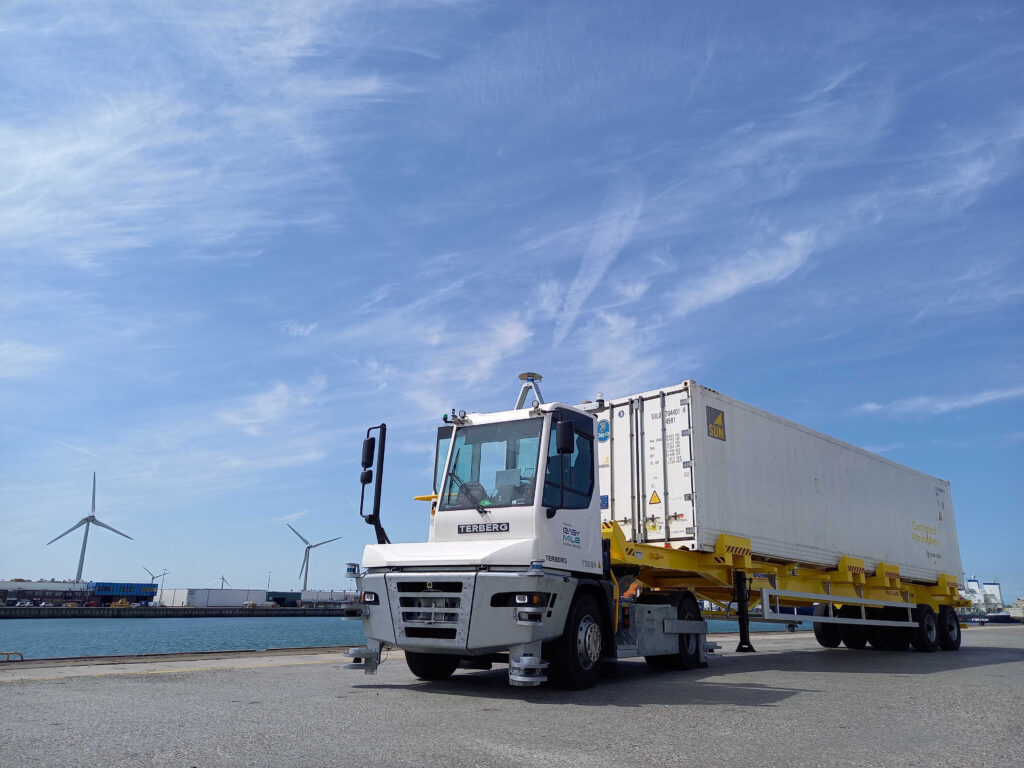Port Use Case
This project targets the development and deployment of safe autonomous transportation systems across various real-life use cases, including the challenging environment of port operations. The Port Use Case focuses specifically on the container transfer and vessel loading activities at the busy roll-in/roll-off terminal in Rotterdam, The Netherlands.
Objective
The main objective is to demonstrate and validate the AWARD technology in a dynamic port setting, integrating automated trailer transfers with DFDS terminal systems to operate effectively alongside other vehicles and personnel. Key goals include enhancing safety, flexibility, productivity, and sustainability, while also reallocating repetitive task handling to more complex operations.
The EZTug Vehicle
The demonstration features the EZTug, a terminal tractor designed for automated horizontal container transport. The EZTug, known for its robust construction, is capable of operating under adverse weather conditions and is utilized round-the-clock. The EZTow tow-tractor and EZ10 autonomous shuttle are also part of the broader vehicle deployment strategy, supporting various operational needs across global locations.

Use Case Description
The Port Use Case is a carefully planned scenario within the AWARD H2020 project, aiming to showcase the capabilities of autonomous technology in port logistics. Key phases include:
The implementation involves mechanical and electrical integration of the Automated Driving System (ADS) into the EZTug, with extensive validation of the operational design domain (ODD) and qualifications. The fleet management system (FMS), developed by Applied Autonomy, facilitates the autonomous movement of vehicles within and outside the terminal, interacting seamlessly with DFDS’ systems to ensure secure and efficient operations.
Safety and efficiency are validated through rigorous testing both on-site and in simulated conditions:
- Simulated Tests: Include navigating under a rain tunnel, avoiding various obstacles like pedestrian and car dummies, and navigating through barriers, tested in scenarios such as straight-line movements, intersections, and roundabouts.
- Real-condition Testing at Vlaardingen, The Netherlands: Focuses on practical implementations of the phased activities, particularly emphasizing safe interaction with the public and integration into existing port operations.
The Rotterdam Terminal, known for its Roll-on/Roll-off (RoRo) services, facilitates a significant volume of traffic, with 22 weekly departures to the UK. This terminal is equipped with 32 tugs similar to the Terberg truck, demonstrating autonomous capabilities essential for vessel operations, technical services, and transshipment activities.
Partners Involved





For further details, updates, and ongoing progress related to this use case, please visit our blog “AWARD’s Port Use Case Testing“.
Use Case Airport
Autonomous Ground Support Equipment: transport of goods in indoor and outdoor environments.